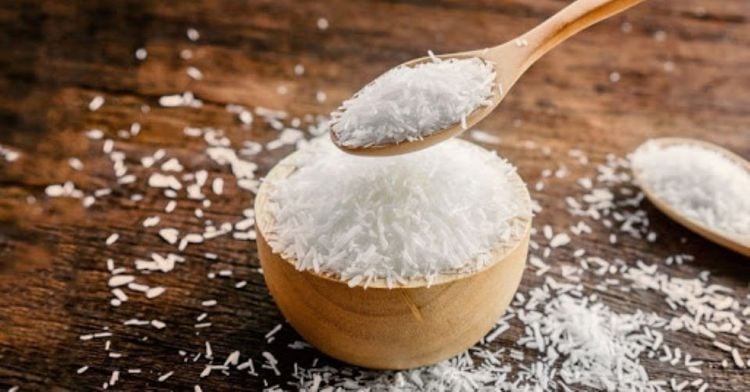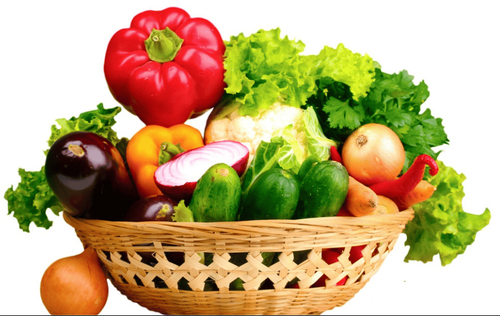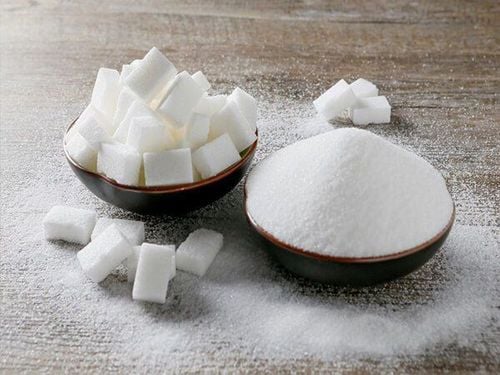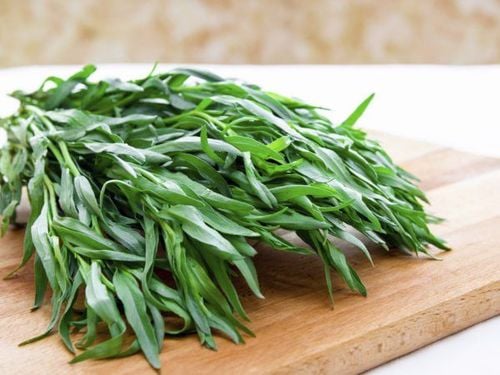This is an automatically translated article.
MSG is a popular spice used in many Asian countries. MSG enhances sweetness and flavor in sauces, broths, soups and many foods. So, do you know what MSG is and how they are made? This article will help you understand more about this issue.
1. What is MSG?
Monosodium glutamate (Monosodium glutamate) is the sodium salt of the common amino acid glutamic acid. Glutamic acid occurs naturally in our bodies, and in many foods and food additives.
This is a popular spice and flavor enhancer, the purest form of umami. MSG is widely used to enhance and enhance flavor in sauces, broths, soups and many other foods. MSG is considered safe to consume and since it contains one-third of the sodium as table salt, it can be used as a partial substitute for salt to reduce sodium in foods while still enhancing flavor.
2. How is MSG made?
Monosodium glutamate occurs naturally in many foods, such as tomatoes and cheese. People around the world have eaten foods rich in glutamate throughout history. For example, a historical dish in the Asian community is glutamate-rich seaweed broth. In 1908, a Japanese professor named Kikunae Ikeda was able to extract glutamate from this broth and determined that glutamate provided the delicious flavor to the soup. Professor Ikeda then filed a patent to produce MSG and commercial production began the following year.
Today, instead of extracting and crystallizing MSG from seaweed broth, MSG is produced by fermentation of starch, sugar beets, cane sugar or molasses. This fermentation process is similar to that used to make yogurt, vinegar, and wine.
Fermentation has been used by humans for centuries as a way to preserve foods and enhance their flavor. MSG is made from natural substances through a modern version of that process, with the help of microorganisms that can transform raw materials like sugarcane into food products. First, sugarcane is extracted as glucose and sent to a fermentation tank, after which fermenting microorganisms are added. These bacteria consume glucose, releasing glutamic acid, although neutralization is converted to solution. This solution was then decolorized and filtered for purity. This pure solution is crystallized by the evaporator and the crystals are dried to give the final product. The whole process has a very small environmental footprint, as its by-products can be returned to the soil as fertilizer to help grow more crops like sugarcane, forming a good cycle.

Bột ngọt được sản xuất bằng quá trình lên men của tinh bột
3. Is MSG safe to eat?
FDA considers the addition of MSG to foods “generally recognized as safe” (GRAS). Although many people self-identify as MSG-sensitive, in studies with such people given MSG or a placebo, scientists have not been able to consistently trigger a response.
3.1. Does "glutamate" in a product mean it contains gluten? No — glutamate or glutamic acid has nothing to do with gluten. People with Celiac disease may react to the wheat in soy sauce, but not to the MSG in the product.
3.2. What is the difference between MSG and glutamate in foods? The glutamate in MSG is chemically indistinguishable from the glutamate found in food proteins. Our bodies ultimately metabolize both sources of glutamate in the same way. The average adult consumes about 13 grams of glutamate per day from dietary protein, while MSG intake is estimated to be around 0.55 grams per day.
4. How can I tell if MSG is in my food?
FDA requires that foods with added MSG must be listed in the ingredients list on the package as MSG. However, MSG occurs naturally in ingredients such as hydrolysed vegetable proteins, autolytic yeasts, hydrolysed yeasts, yeast extracts, soy extracts and protein isolates, as well as in tomatoes and cheeses. cool. While the FDA requires these products to be listed on the ingredient list, it does not require the label to also state that they naturally contain MSG. However, foods with any ingredients that contain natural MSG should not say "MSG Free" or "No MSG added" on their packaging. MSG also cannot be listed as “seasoning and flavoring”.
Has the FDA received any reports of MSG-related side effects?
For many years, the FDA has received reports of symptoms such as headaches and nausea after eating foods containing MSG. However, we were never able to confirm that MSG caused the reported effects.
These adverse event reports led the FDA to ask the independent scientific group the Federation of American Societies for Experimental Biology (FASEB) to examine the safety of MSG in the 1990s. FASEB concluded that MSG was safe. The FASEB report identified a number of short-term, transient, and generally mild symptoms, such as headache, numbness, flushing, tingling, palpitations, and drowsiness that may occur in some people sensitive consume 3 grams of MSG or more without food. However, a typical serving of MSG contains less than 0.5 grams of MSG. Consuming more than 3 grams of MSG without food at once is not possible.
Please dial HOTLINE for more information or register for an appointment HERE. Download MyVinmec app to make appointments faster and to manage your bookings easily.
References: fda.gov, ajinomoto.com












